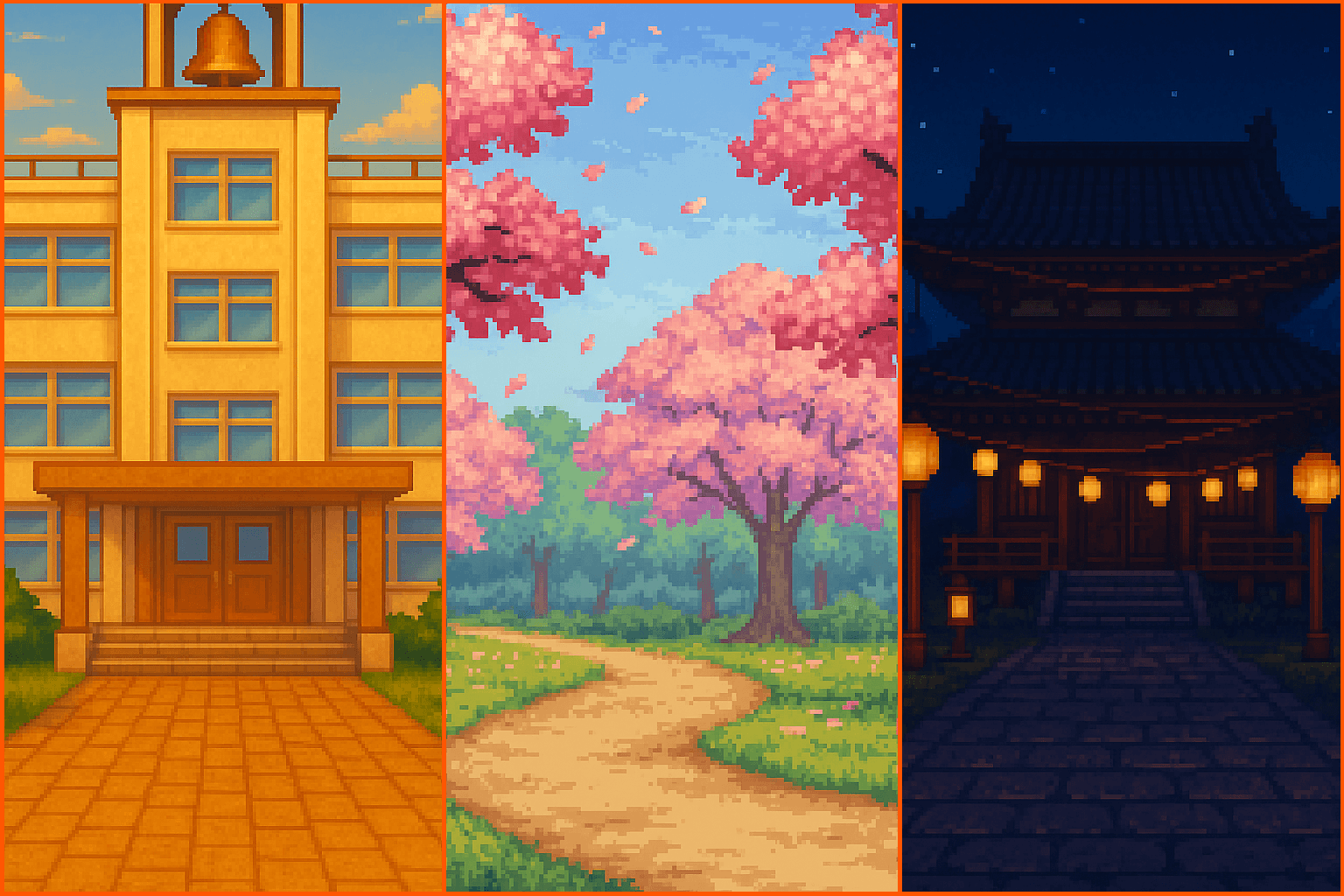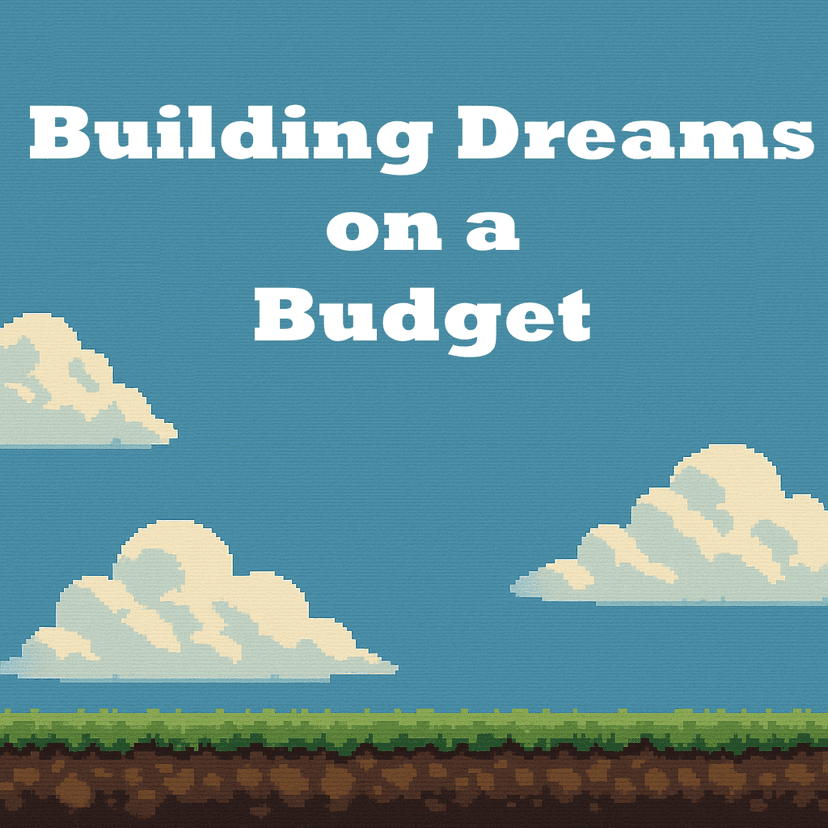Dreams are limitless. They can be nostalgic, surreal, and even unsettling—and in Daydream Hero, they're the stage where every run unfolds.
🌸 Why Dreamscapes Matter
In an endless platformer, variety is everything. If the world doesn't surprise you, the run becomes predictable. From the start, we knew that designing immersive dreamscapes would be just as important as designing responsive controls or rewarding progression. Each environment needed to feel alive, nostalgic, and slightly surreal—something players could instantly connect with but also feel curious to explore. Dreamscapes aren't just backdrops. They define the mood, the pace, and even the types of challenges players face. A cherry blossom park might invite fluid, airy jumps, while a temple shrine might demand sharper reflexes. Every setting adds flavor to the dream.
🏫 Everyday Inspirations, Dreamlike Twists
Each dreamscape in Daydream Hero starts with a familiar setting, but the real magic comes from the creatures that inhabit them. By weaving in enemies that feel natural to each stage, we give every run its own personality and challenge:
- •In Front of the School — grounded in everyday life, this stage features classic mobs like stray dogs and sharp-eyed crows—fitting for the scenes you'd see in anime schoolyards.
- •Cherry Blossom Park — serene at first, but corrupted by dream logic. Here you'll find evil bats and slimes with a purplish-pink hue, colored by the very petals they've consumed.
- •Temple Shrine — heavy with an undead atmosphere, this stage is guarded by stone gargoyles and lumbering zombies, transforming a sacred place into something eerie and formidable.
- •Desert Boss Stage — unlike the others, this isn't just another level—it's our nostalgic twist on the endless runner formula, a climax where the dream crescendos into its toughest challenges.
These choices ensure every dream feels more than just a backdrop. The mobs themselves tell a story, creating stages that feel alive, distinct, and immersive.
🎨 The Pixel Art Style
From the start, we knew Daydream Hero had to embrace retro pixel art. It's not just about nostalgia—pixel art communicates gameplay clearly. Every obstacle, every mob, every collectible pops instantly, so players know how to react in the moment. But clarity alone wasn't enough. To capture the atmosphere of dreams, we leaned into bright yet slightly muted tones, giving the world a hazy, surreal quality. A cherry blossom park bathed in soft pinks feels different from the cool blues of a temple shrine or the golden hues of the desert boss stage. Each dream is also supported by a moving backdrop that feels like part of the map itself. Cherry petals drift with the wind, temple lanterns glow and flicker, desert sands roll in the distance. These seamless layers make the stage feel whole, as if the player is running through a living dream rather than a flat set piece.
🌀 Designing Variety Through Dreams
In Daydream Hero, every run begins in a single dream—and once you're inside, you're locked into its world. This design choice makes each dream feel distinct, with its own rules, pacing, and identity.
- •Unique Mechanics – Each dream isn't just a different backdrop—it introduces mechanics that change how you play. The mobs, obstacles, and flow are all tailored to the environment.
- •Environmental Influence – The setting defines the rhythm. Running past the schoolyard feels grounded and familiar, while the cherry blossom park adds whimsy and unpredictability. The shrine demands precision under pressure, and the desert boss stage pushes you to your limits.
- •Progressive Challenge – As the dream continues, speed gradually increases. This tests the player's reaction time, creating a natural difficulty curve that feels intuitive but demanding the longer you last.
By treating each dream as its own living system, we ensure that players aren't just running endlessly—they're exploring and mastering different worlds with their own personalities.
✨ Balancing Challenge and Wonder
While Daydream Hero is built on quick reflexes and rising speed, we never wanted the experience to feel purely mechanical. The dreamscapes aren't just stages to survive—they're meant to inspire curiosity and wonder along the way. That's why every environment is layered with details that reward players for paying attention, even in the middle of a tense run. Cherry petals drift softly in the park, lanterns flicker at the shrine, and shadows stretch across the desert sands. These small touches make each dream feel alive, giving players a sense of place even as they're focused on dodging the next obstacle. This balance is what defines Daydream Hero: a game where your reaction time is always tested, but where the journey itself feels beautiful and worth remembering.
🚀 What's Next for Dream Design
The four dreamscapes we've shared so far are just the beginning. As Daydream Hero continues to grow, we plan to expand the roster of environments, each with its own mechanics, mobs, and visual identity. Our goal is for every new dream to feel like a fresh adventure, not just a new coat of paint. We're also exploring ways to tie dreamscapes to seasonal updates, so the world evolves along with the calendar. Imagine running through a snow-covered schoolyard in winter, or a summer festival version of the shrine. These updates will keep the game fresh while also giving players a reason to revisit older dreams. Ultimately, dream design in Daydream Hero is about creating memorable moments. Whether it's the nostalgia of sprinting past the school gates, the eerie tension of the shrine, or the intensity of the desert boss stage, our dreamscapes are built to challenge your reflexes while pulling you deeper into a world that feels alive.



